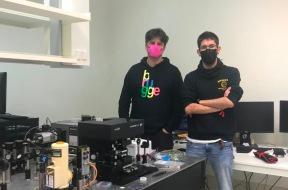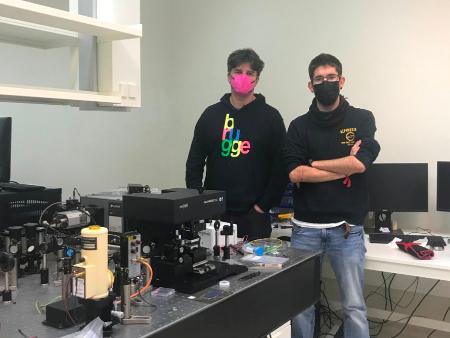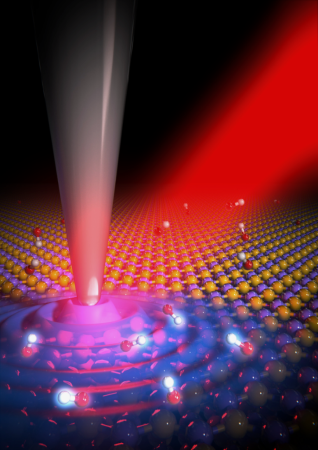The University of Oviedo collaborates in a further advance in regard to the interaction of light with molecules
The research, which has revealed the propagation of light at the nanoscale coupled to molecules, will contribute to further studies related to rapid optical communication, medical diagnosis and laser surgery
Light plays an essential role in modern science and technology, with applications ranging from rapid optical communication to medical diagnosis and laser surgery. In many of these applications, the interaction of light at the nanoscale (known as nanolight) with matter is of vital importance. In this area of research, the University of Oviedo has collaborated with nanoGUNE Cooperative Research Centre (a member of BRTA) and the Donostia International Physics Centre to use a nano-imaging technique to study how nanolight and molecular vibrations interact with each other. The images reveal that strong vibrational coupling can be achieved - a phenomenon that has recently attracted much attention for its potential use in controlling the fundamental physical and chemical properties of materials. The result could lead to the development of an innovative platform for on-chip chemical identification of small quantities of molecules and for studying the fundamental aspects of strong light-matter coupling phenomena at the nanoscale. The work, in which the University of Oviedo collaborated through Prof Pablo Alonso González and doctoral candidate Javier Taboada Gutiérrez, has been published in the prestigious scientific journal "Nature Photonics".
Under infrared frequencies, light can interact with molecules through its vibrations at specific frequencies. For this reason, molecular materials can be identified by measuring their infrared transmission or reflection spectra. This technique, which is often called infrared fingerprint spectroscopy, is widely used for the analysis of chemical, biological and medical substances.
It has recently been discovered that the interaction between infrared light and molecular vibrations can be so strong that eventually the material's properties, such as conductivity and chemical reactivity, are altered. This effect, called strong vibrational coupling, depends largely on the amount of molecules used, which is a challenge for the implementation of applications.
In the study, the authors detail how this problem can be circumvented by using nanolight. Pablo Alonso González notes that "the excitation of nanolight in atomic layers of hexagonal boron nitride (h-BN) allows strong vibrational coupling to be viewed with a few organic molecules". "The images show us that the nanolight is strongly attenuated to the frequency of molecular vibration, which could be of value to future detection applications," the researcher adds.
The possibility of strong light-molecule coupling at the nanoscale could be used in the future for developing ultra-sensitive spectroscopy devices or for studying quantum aspects that have not been accessible until now.
Images gallery





